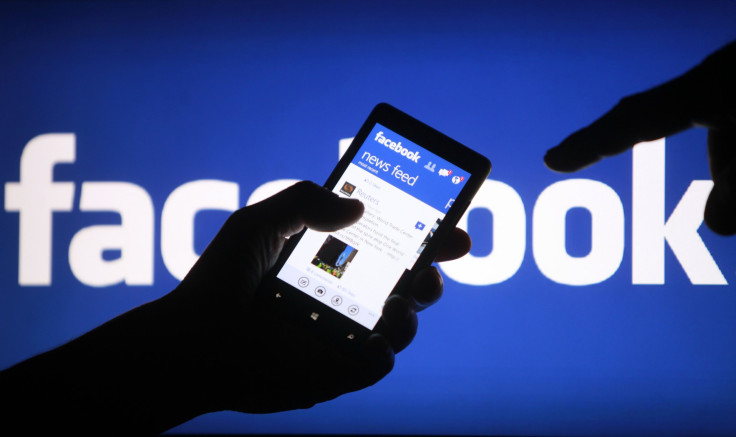Facebook Users Show Range Of Reactions To New Love, Haha, Sad, Angry, Wow Emoticons

In the 24 hours since Facebook released five new alternatives to the general "like" button, users and brands have had a range of reactions to them-- and most of the reactions conveniently had their own corresponding emoticon to share on the social network. As of Wednesday, Facebook users can get five new emoticons -- "love," "haha," "sad," "angry" and "wow" — by hovering over or holding on “like.”
But the range of reactions to the new feature was not a surprise to Facebook execs. It took about a month for Facebook users in Spain, where the network released a beta test, to start using the new emoticons with frequency, Product Manager Sammi Krug said in conversation with International Business Times last week.
“I’m excited to launch this and see how everyone reacts,” Krug said. “It’s so easy. It’s so lightweight. It opens a lot of doors.”
The big idea behind Facebook Reactions was to create a new way for someone to “authentically react,” Krug said. It was a direct response to users’ requests for options beyond the like, which included a “dislike” button.
But Facebook CEO Mark Zuckerberg was against a thumbs-down emoticon— that’s not what the community really wanted, he claimed. “Our community has been asking for a dislike button for years, but not because people want to tell friends they don't like their posts. People wanted to express empathy and make it comfortable to share a wider range of emotions,” Zuckerberg posted on Facebook after the global release of Reactions.
So far, the global Facebook community has expressed mixed reactions to the new feature.
Some pointed to the negative possibility of trolling and complained about how the faces looked. Others asked where the “dislike” button was. “I think it’s very early stage right now, and Facebook users are going a little ‘click crazy’ with it because it’s something new,” said Chris Paradysz, CEO and founder of digital marketing agency PM Digital.
“There’s grumbling on both sides,” said Dr. Denise Agosto, a professor of information science at Drexel University. “A lot of people just couldn’t figure out how to use them.”
Indeed, the feature rolled out to users gradually on Wednesday. The mobile app prompted users on how to use it once they got access, but after the first use there were no further instructions other than Facebook’s blog post on the update and the flood of news stories.
Agosto noted that people’s use of the feature may depend on how often they use Facebook. Indeed, Facebook has 1.59 billion monthly active users, but it defines "active" as using the site at least once a month. So there are Facebook users who may not have seen or used the feature yet.
“Teenagers may check their Facebook only a couple times a month. They’re moving toward individual communication, one-to-one,” said Agosto, who specializes in studying youth and technology.
Active Facebook users took to Twitter to air their grievances:
— Sam Thielman (@samthielman) February 24, 2016
All we wanted was a Dislike Button. #socialmedia #facebook pic.twitter.com/iRD9xT8mho
— Meg Nordmann (@MegNordmann) February 24, 2016
Can't wait to spend a day this weekend going around putting inappropriate reactions on Facebook status updates.
— Mike Schramm (@mikeschramm) February 25, 2016
Some publishers have fallen in love with Reactions. “We cover a lot of different news, and not all of it is happy,” said Samantha Barry, head of social media at CNN. “There are stories we’ll post on our page that will make people angry, or happy, or sad. Now, they have a multitude of emotions that they can react with.”
Prior to Reactions' launch, The Huffington Post had discovered that positive news was getting shared more frequently on social media. And so, in February 2015, editor-in-chief Ariana Huffington announced HuffPo's “What’s Working” initiative.
CNN, by contrast, had claimed it has never altered its editorial strategy to get better results on social media. “What we put out would be the same -- reaction button or not,” Barry said.
Now both publishers and average Facebook users have access to insights on those reactions. For example, a CNN story on Donald Trump telling Anderson Cooper he didn’t see the nomination race going to the convention has garnered 2,200 reactions. CNN shared that 1,400 are a standard like while 512 are angry. “That’s positive for us,” Barry said. “We are a global news company that often covers stories that are uncomfortable, but we do investigations that people need to see.”
Additionally, advertisers — who provide the majority of Facebook’s revenue — now have access to these insights as well. For now, Reactions will not affect Facebook's algorithm. Reactions “open up a whole Pandora’s box of emotional challenge for marketers,” said Paradysz of PM Digital.
The range of emoticons seems likely to increase the number of clicks on the News Feed. For now, those emoticons are counted by Facebook as one signal, so they won't impact the algorithm any more than the one-note "like."
But, in the future, Facebook could show a user more posts that they chose to love, which so far has been the most common reaction. From Facebook’s New York headquarters last week, Krug said, “We want to continue to iterate and bring this to other places.”
© Copyright IBTimes 2024. All rights reserved.






















